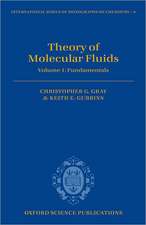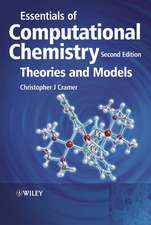Optical Spectroscopy of Glasses: Physics and Chemistry of Materials with C:, cartea 1
Editat de I. Zschokkeen Limba Engleză Hardback – 30 sep 1986
| Toate formatele și edițiile | Preț | Express |
|---|---|---|
| Paperback (1) | 1216.48 lei 6-8 săpt. | |
| SPRINGER NETHERLANDS – oct 2011 | 1216.48 lei 6-8 săpt. | |
| Hardback (1) | 1222.49 lei 6-8 săpt. | |
| SPRINGER NETHERLANDS – 30 sep 1986 | 1222.49 lei 6-8 săpt. |
Preț: 1222.49 lei
Preț vechi: 1490.84 lei
-18% Nou
Puncte Express: 1834
Preț estimativ în valută:
233.100€ • 254.26$ • 196.68£
233.100€ • 254.26$ • 196.68£
Carte tipărită la comandă
Livrare economică 21 aprilie-05 mai
Preluare comenzi: 021 569.72.76
Specificații
ISBN-13: 9789027722317
ISBN-10: 9027722315
Pagini: 292
Ilustrații: IX, 272 p.
Dimensiuni: 170 x 244 x 21 mm
Greutate: 0.58 kg
Ediția:1986
Editura: SPRINGER NETHERLANDS
Colecția Springer
Seria Physics and Chemistry of Materials with C:
Locul publicării:Dordrecht, Netherlands
ISBN-10: 9027722315
Pagini: 292
Ilustrații: IX, 272 p.
Dimensiuni: 170 x 244 x 21 mm
Greutate: 0.58 kg
Ediția:1986
Editura: SPRINGER NETHERLANDS
Colecția Springer
Seria Physics and Chemistry of Materials with C:
Locul publicării:Dordrecht, Netherlands
Public țintă
ResearchCuprins
Dynamical Theory of Optical Linewidths in Glasses.- 1. Introduction.- 2. Model Hamiltonian.- 3. TLS Line-Broadening Mechanism.- 4. Homogeneous Linewidth.- 5. Microscopic Theory.- 6. Conclusions.- Optical Spectroscopy of Ions in Inorganic Glasses.- 1. Introduction.- 2. Inorganic Glass Structure and Composition.- 3. Optical Properties of Impurity Centers in Inorganic Glass.- 4. Laser Spectroscopy of Ions in Glasses.- 5. Concluding Remarks.- Model Calculation of Optical Dephasing in Glasses.- 1. Introduction.- 2. The Model and its Hamiltonian.- 3. Optical Line Shape Calculated with Mori’s Formalism.- 4. Guest Molecule Coupled to a Single TLS.- 5. Line Shape.- 6. Averaging over Two-Level Systems.- 7. Coupling of the Impurity to Several Two-Level Systems.- 8. Concluding Remarks.- Structural Relaxation Processes in Polymers and Glasses as Studied by High Resolution Optical Spectroscopy.- 1. Introduction.- 2. The’ site-Memory’ Function.- 3. The Non-Equilibrium Nature of Glasses and its Relation to Optical Properties.- 4. Dynamic and Adiabatic Optical Relaxation Processes.- 5. Reversibility and Irreversibility.- 6. The Residual Linewidth.- 7. Spectral Diffusion and Structural Relaxation: Model Description.- 8. The Logarithmic Decay Law and its Relation to Other Dispersive Time Dependencies.- 9. Experimental Investigation of Spontaneous Structural Relaxation Processes.- 10. Field Effects and Spectral Diffusion Phenomena.- Models for Reaction Dynamics in Glasses.- 1. Introduction.- 2. Relaxation Viewed as Chemical Reaction: the Kinetic Approach.- 3. A Parallel Relaxation Scheme: the Direct Transfer.- 4. Parallel-Sequential Schemes: Random Walks.- 5. Continuous-Time Random Walks (CTRW).- 6. Ultrametric Spaces (UMS).- 7. The Bimolecular Reactions A + A ? 0, A + B ? 0 (A0= B0).- 8. Conclusions.











